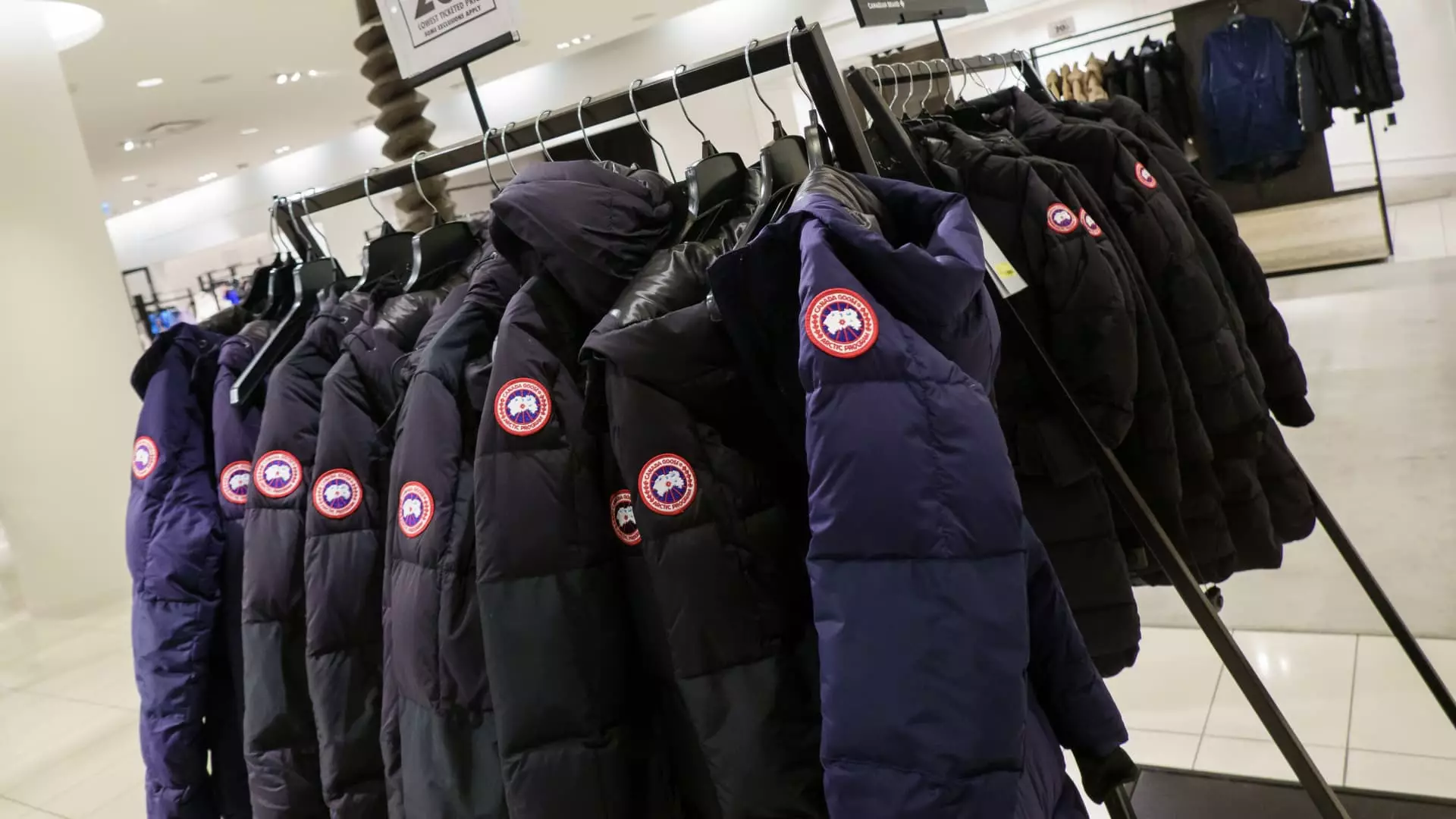In a market teetering on the edge of economic instability, Canada’s luxury outerwear brand, Canada Goose, has managed to pull off a remarkable feat. On Wednesday, stocks surged by nearly 20%, with earlier trading seeing an even more astonishing rise of up to 28%. This bullish response came on the heels of their fiscal fourth-quarter earnings report that outsized analysts’ predictions. Reported earnings per share climbed to 33 Canadian cents, a leap above the expected 23 cents, and revenues reached CA$384.6 million, eclipsing estimates of CA$356.4 million. Such figures underlie a resilient performance that raises eyebrows and piques interest in a sector increasingly plagued by economic uncertainty.
However, the executives at Canada Goose did not shy away from acknowledging the storm clouds that loom ahead. The company refrained from providing a fiscal outlook for 2026, citing “macroeconomic uncertainty” as a primary concern. This comes as a reminder of an underlying truth in today’s commerce: even the most robust can falter when the ground beneath them shifts unceremoniously.
Adapting to the New Consumer Landscape
Canada Goose’s high-altitude success is attributed not just to its premium products like luxury parkas and puffer jackets, but also to strategic adaptations in its business model. Amongst the unfolding economic narrative, the chief financial officer, Neil Bowden, highlighted that tariffs will not materially impact the company’s financial plans for 2026. For a brand known for its eye-watering pricing, one might ask, how much can luxury withstand during a financial crunch? This appears to be the tightrope that Canada Goose walks—a brand tied to seasonal trends but striving for year-round relevance.
The introduction of products such as rain jackets and summer apparel represents an audacious attempt to negate the seasonal sales fluctuations that have long plagued the brand. Even more notably, Canada Goose’s recent collaboration with artificial intelligence in their eyewear launch—a noticeable pivot to a digitally-savvy consumer base—illustrates an earnest effort to meet the demands of modern buyers who crave both quality and convenience. While this product marks a pivotal move, one can’t help but ponder whether these efforts are merely band-aids on a wider wound; luxury spending often leans heavily on traditional seasonal metrics that AI cannot entirely rewrite.
Financial Resilience Despite Challenges
With net income rising from CA$5 million to CA$27.1 million year-on-year, Canada Goose has proven its chops in navigating rough waters. In the shadow of notable rivals like LVMH and Burberry grappling with a slowdown, this upward trajectory paints a conflicting picture—a beacon of hope in an otherwise stormy landscape. Despite facing a significant decline in stock performance earlier in the year, the recent earnings reveal a complex narrative intertwined with the economic zeitgeist.
However, one must remain cautious. This doesn’t just feel like a story of triumph; it evokes a cautionary tale where past successes may not serve as reliable blueprints for future victories. The ever-evolving global trade environment, coupled with changing consumer spending behaviors, casts long, unyielding shadows over even the most venerable brands. For the consumer, the message seems contradictory: while Canada Goose celebrates financial resilience, a broader skepticism about luxury spending looms, raising questions about sustainability in an unpredictable economy.
The Road Ahead: A Balancing Act
As Canada Goose stands stubbornly defiant against economic headwinds, it risks becoming a case study in how luxury brands either refresh their narratives for modern audiences or become relics of their own past. With tariffs, environmental concerns, and geopolitical tensions acting as persistent background noise, the company’s confidence in its brand strength remains both inspirational and treacherous.
The challenge for Canada Goose is vast: to maintain the allure and exclusivity that drives its legacy while expanding into new territories that might dilute its identity. For a brand defined by ice and snow, will it truly thrive in the heat of summer? Whether Canada Goose can successfully walk this precarious line between innovation and traditionalism will likely dictate its future in a fast-changing marketplace. As the brand charts its course through these turbulent waters, one question lingers: does resilience ultimately fuel growth, or does it merely prolong the inevitable?

Leave a Reply